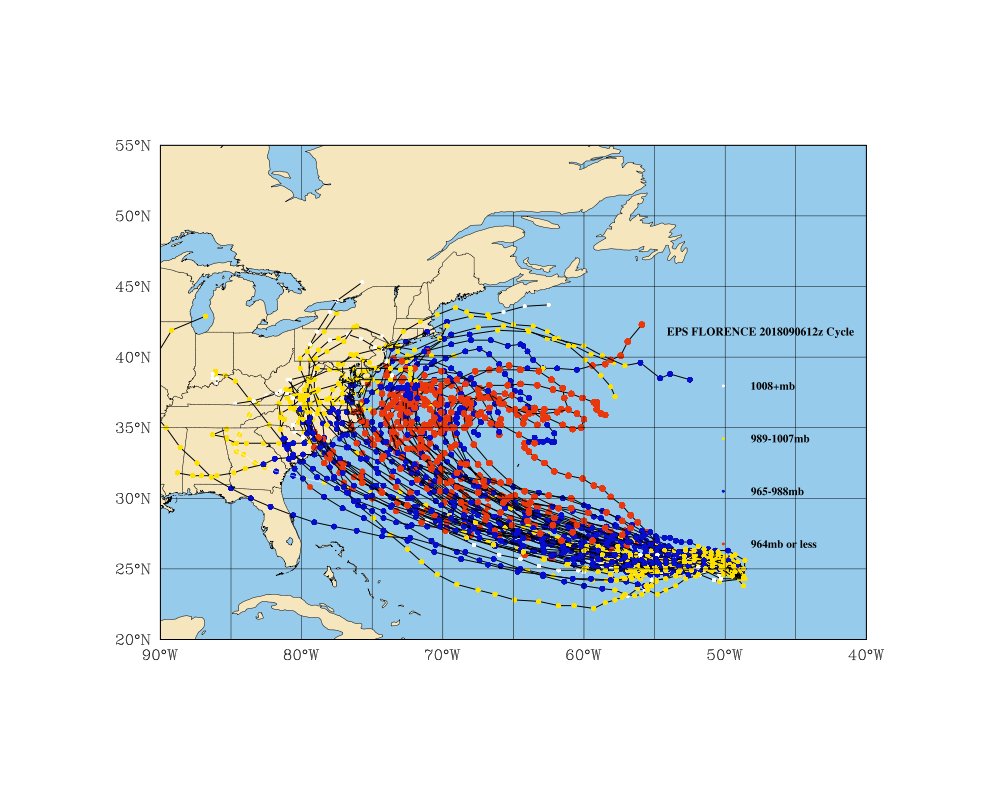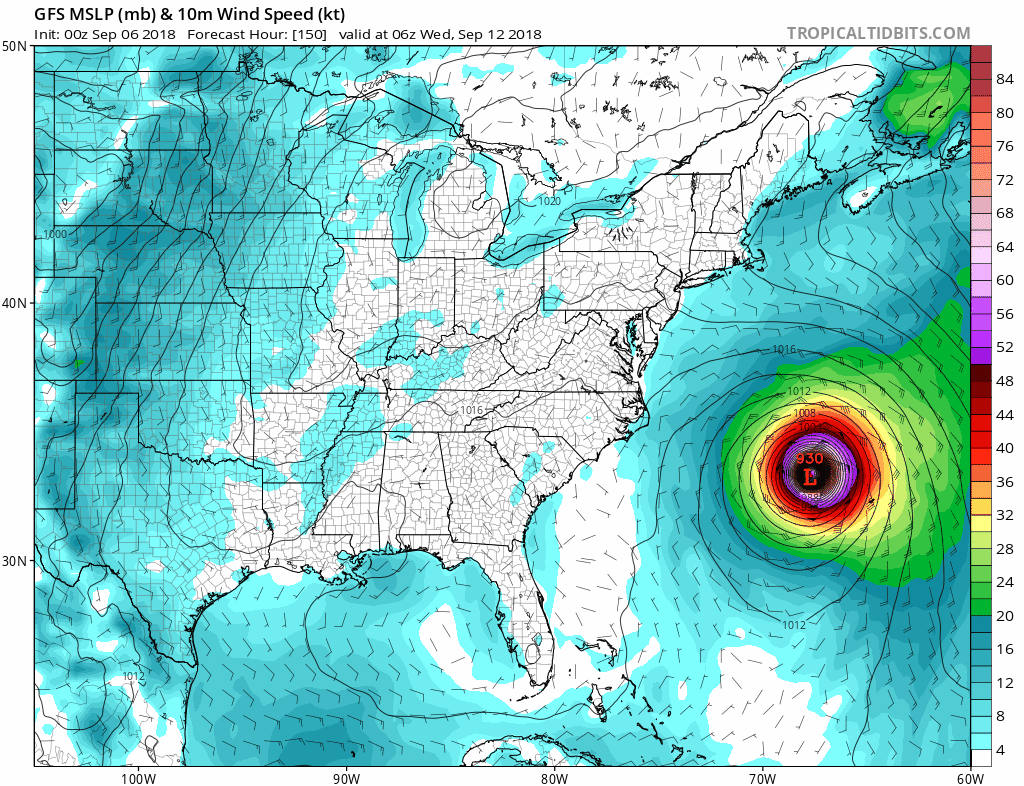The latest (12Z) UKMET has continued the N adjustments to reflect on initializations being too far SW and I don't think these adjustments are done yet. Here's why (all times EDT)
- 12Z 9/5 run: had Flo at 24.1N, 51.5W for its 36 hour forecast
- 12Z 9/6 run: initialized Flo at 24.1N, 48.6W or a whopping 3 degrees east adjustment!
- Flo was actually at 24.1N, 47.9W as of 5 AM today, which is a whopping 3.6 degrees or ~225 miles east of where the 12Z 9/5 run had her at 24.1 N!
- So the latest UKMET had Flo initialized at 24.1N, 48.6W as of 8 AM vs the actual of 24.1N, 47.9W at 5 AM and actual of 24.6N, 48.6W at 11 AM with Flo still moving ~WNW/still gaining a little latitude. So, the latest UKMET initialization was still SW of reality. Therefore, I expect at the very least one more decent NE adjustment for the 0Z run tonight.
In reaction to this (domino effect), note how much further north is the latest UKMET when it crosses 60W:
- 12Z 9/5 run: 23.4 N
- 0Z 9/6 run: 24.5 N
- 12Z 9/6 run: 25.9 N
- I expect the 0Z 9/7 run to be even further north when it crosses 60W and the latter part of that track to be even further north than the current run as it gets closer to the CONUS. We'll see tonight if that's right.
- Based on the trend of model consensus, especially the UKMET, I feel the chances of a hit in FL, GA, and lower SC have decreased as of the moment though there obviously still is a chance of a hit there and trends could still change back later.










